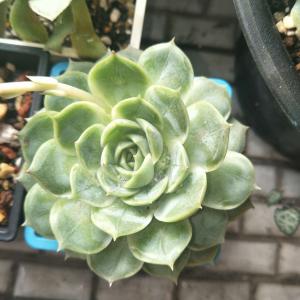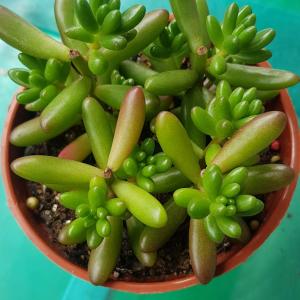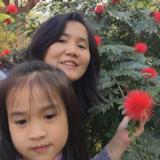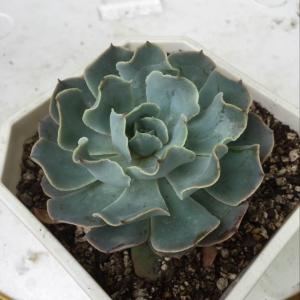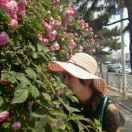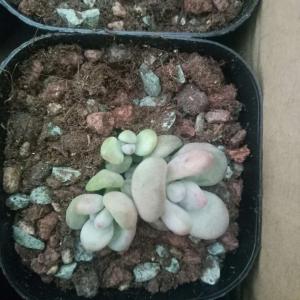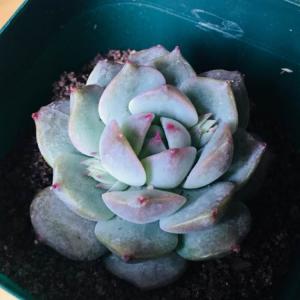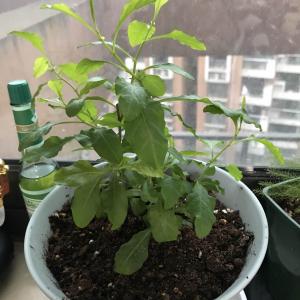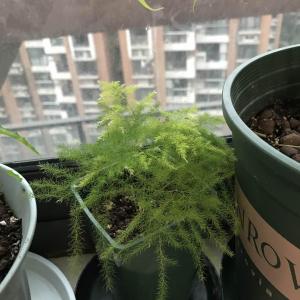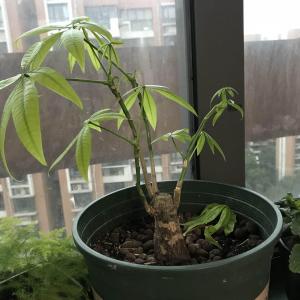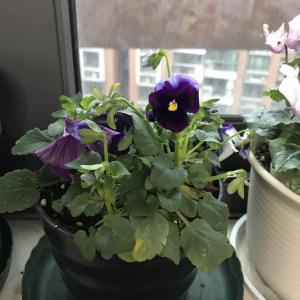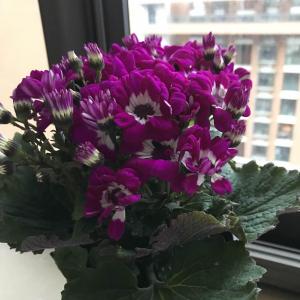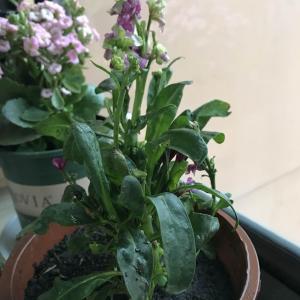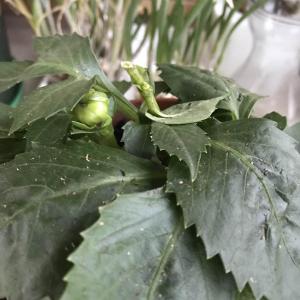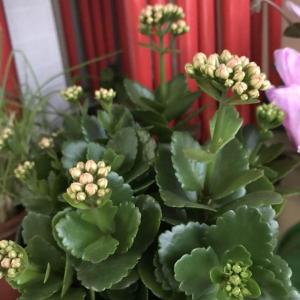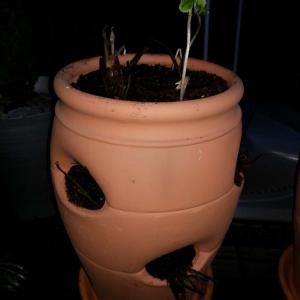文章
Miss Chen
2018年03月07日

Description: This wildflower is a biennial or short-lived perennial. During the 1st year, it consists of a low rosette of leaves spanning about 1' across. During the 2nd year and thereafter, it develops stems with alternate leaves and becomes about 3-8' tall. These stems are usually sparingly branched. The central stem and side stems are light green to reddish brown, terete with several longitudinal ridges, and pubescent-woolly. The alternate leaves are up to 9" long and 3" across, becoming gradually smaller as they ascend the stems. These leaves are lanceolate, oblanceolate, or elliptic in shape; their margins are entire, slightly dentate, or shallowly lobed. At the pointed tip of each lobe or dentate tooth, there is usually a spine. The upper surface of each leaf is green with appressed white hairs, while the lower surface is covered with a dense mat of white-woolly hairs. The base of each leaf is sessile or clasps its stem slightly. The basal leaves of 1st year plants are similar to the alternate leaves, except they are often more deeply pinnatifid.
Flowering Plant
The upper stems terminate in individual flowerheads spanning about 2" across. Each flowerhead has a multitude of small disk florets that are pink to purplish pink. Each floret has a tubular corolla that divides into 5 slender lobes. The base of the flowerhead is surrounded by numerous floral scales (phyllaries) that partially overlap each other. Each small floral scale is lanceolate-ovate and dark green with a white midrib; it has a dark tip, where a fine spine projects outward. Underneath each flowerhead, there are 2-3 small leafy bracts with spines along their margins like the leaves. The blooming period occurs from late summer to early fall and lasts about 1–1½ months. The flowerheads are usually fragrant. After the blooming period, the entire plant begins to wither away and turns yellow to brown. The disk florets of the flowerheads become masses of bullet-shaped achenes with tufts of cottony white hairs. These achenes are distributed by the wind. The root system consists of a taproot. This wildflower spreads by reseeding itself.

Cultivation: The preference is full sun to light shade, moist to mesic areas, and a fertile loam, clay-loam, or sandy-loam soil. Tall Thistle is more tolerant of shade than other thistles. The lower leaves may wither away prematurely at a dry sunny site. The size of this plant can vary significantly depending on environmental conditions.
Range & Habitat: The native Tall Thistle is occasional throughout Illinois (see Distribution Map). This thistle is widely distributed, but usually isn't common where it occurs. Habitats include open deciduous woodlands, woodland borders, thinly wooded rocky slopes, areas along woodland paths, savannas, thickets, swamps, meadows, areas along railroads, and roadsides. Tall Thistle can be found in both disturbed and undisturbed habitats; it is found in wooded habitats more often than other thistles.

Faunal Associations: The nectar of the flowerheads attracts bumblebees, long-horned bees (Melissodes spp.), Fritillary butterflies (Speyeria spp.), Painted Lady butterflies (Vanessa spp.), Swallowtail butterflies (Papilio spp.), and Sphinx moths, including hummingbird clearwing moths (Hemaris spp.). The pollen also attracts Halictid bees and other bees, Syrphid flies, and various beetles (Robertson, 1929; Graenicher, 1907). Other insects feed destructively on the foliage, sap, and other parts of Cirsium spp. (thistles). These insects include Oulema palustris (a leaf beetle), Cassida rubiginosa (Thistle Tortoise Beetle), Euphoria inda (Bumble Flower Beetle), Melanoplus borealis (Northern Grasshopper), Entylia bactriana (a treehopper), and such aphids as Brachycaudus cardui (Thistle Aphid), Capitophorus elaeagni (Artichoke Aphid), and Uroleucon cirsii (Large Thistle Aphid); see Clark et al. (2004), Marshall (2006), Cranshaw (2004), Funkhouser (1917), and Brust et al. (2008). The caterpillars of two butterflies, Calephelis muticum (Swamp Metalmark) and Vanessa cardui (Painted Lady), also feed on thistles (Opler & Krizek, 1984; Wagner, 2005), as do the caterpillars of several moths (see Moth Table). The American Goldfinch, Clay-colored Sparrow, Pine Siskin, Slate-colored Junco, and Indigo Bunting eat the seeds of thistles; the American Goldfinch also uses thistle-down to line its nests (Martin et al., 1951/1961; DeVore et al., 2004). Although the Tall Thistle is less heavily armed with spines than some thistles, they provide some protection from hoofed mammalian herbivores.

Photographic Location: Along a woodland path at Fox Ridge State Park in east-central Illinois.
Comments: As the common name suggests, this thistle can become quite tall. It resembles Cirsium discolor (Pasture Thistle) and other common thistles, except that its leaves are less pinnatifid and spiny. The native Pasture Thistle prefers habitats that are more dry and sunny, but it is also sometimes found in wooded habitats. An aggressive Eurasian species, Cirsium vulgare (Bull Thistle), also prefers habitats that are more dry and sunny; it is even more heavily armed with spines than the Pasture Thistle. Unlike the Tall Thistle and Pasture Thistle, the Bull Thistle has leaf undersides that are more green because they are less densely hairy. The leaf undersides of the preceding native thistles are bright white because they have dense mats of white-woolly hairs. All of these tall-growing thistles are in bloom at about the same time of year and their erect flowerheads are pink to purplish pink.
Flowering Plant
The upper stems terminate in individual flowerheads spanning about 2" across. Each flowerhead has a multitude of small disk florets that are pink to purplish pink. Each floret has a tubular corolla that divides into 5 slender lobes. The base of the flowerhead is surrounded by numerous floral scales (phyllaries) that partially overlap each other. Each small floral scale is lanceolate-ovate and dark green with a white midrib; it has a dark tip, where a fine spine projects outward. Underneath each flowerhead, there are 2-3 small leafy bracts with spines along their margins like the leaves. The blooming period occurs from late summer to early fall and lasts about 1–1½ months. The flowerheads are usually fragrant. After the blooming period, the entire plant begins to wither away and turns yellow to brown. The disk florets of the flowerheads become masses of bullet-shaped achenes with tufts of cottony white hairs. These achenes are distributed by the wind. The root system consists of a taproot. This wildflower spreads by reseeding itself.

Cultivation: The preference is full sun to light shade, moist to mesic areas, and a fertile loam, clay-loam, or sandy-loam soil. Tall Thistle is more tolerant of shade than other thistles. The lower leaves may wither away prematurely at a dry sunny site. The size of this plant can vary significantly depending on environmental conditions.
Range & Habitat: The native Tall Thistle is occasional throughout Illinois (see Distribution Map). This thistle is widely distributed, but usually isn't common where it occurs. Habitats include open deciduous woodlands, woodland borders, thinly wooded rocky slopes, areas along woodland paths, savannas, thickets, swamps, meadows, areas along railroads, and roadsides. Tall Thistle can be found in both disturbed and undisturbed habitats; it is found in wooded habitats more often than other thistles.

Faunal Associations: The nectar of the flowerheads attracts bumblebees, long-horned bees (Melissodes spp.), Fritillary butterflies (Speyeria spp.), Painted Lady butterflies (Vanessa spp.), Swallowtail butterflies (Papilio spp.), and Sphinx moths, including hummingbird clearwing moths (Hemaris spp.). The pollen also attracts Halictid bees and other bees, Syrphid flies, and various beetles (Robertson, 1929; Graenicher, 1907). Other insects feed destructively on the foliage, sap, and other parts of Cirsium spp. (thistles). These insects include Oulema palustris (a leaf beetle), Cassida rubiginosa (Thistle Tortoise Beetle), Euphoria inda (Bumble Flower Beetle), Melanoplus borealis (Northern Grasshopper), Entylia bactriana (a treehopper), and such aphids as Brachycaudus cardui (Thistle Aphid), Capitophorus elaeagni (Artichoke Aphid), and Uroleucon cirsii (Large Thistle Aphid); see Clark et al. (2004), Marshall (2006), Cranshaw (2004), Funkhouser (1917), and Brust et al. (2008). The caterpillars of two butterflies, Calephelis muticum (Swamp Metalmark) and Vanessa cardui (Painted Lady), also feed on thistles (Opler & Krizek, 1984; Wagner, 2005), as do the caterpillars of several moths (see Moth Table). The American Goldfinch, Clay-colored Sparrow, Pine Siskin, Slate-colored Junco, and Indigo Bunting eat the seeds of thistles; the American Goldfinch also uses thistle-down to line its nests (Martin et al., 1951/1961; DeVore et al., 2004). Although the Tall Thistle is less heavily armed with spines than some thistles, they provide some protection from hoofed mammalian herbivores.

Photographic Location: Along a woodland path at Fox Ridge State Park in east-central Illinois.
Comments: As the common name suggests, this thistle can become quite tall. It resembles Cirsium discolor (Pasture Thistle) and other common thistles, except that its leaves are less pinnatifid and spiny. The native Pasture Thistle prefers habitats that are more dry and sunny, but it is also sometimes found in wooded habitats. An aggressive Eurasian species, Cirsium vulgare (Bull Thistle), also prefers habitats that are more dry and sunny; it is even more heavily armed with spines than the Pasture Thistle. Unlike the Tall Thistle and Pasture Thistle, the Bull Thistle has leaf undersides that are more green because they are less densely hairy. The leaf undersides of the preceding native thistles are bright white because they have dense mats of white-woolly hairs. All of these tall-growing thistles are in bloom at about the same time of year and their erect flowerheads are pink to purplish pink.
0
0
文章
Miss Chen
2018年03月07日

Description: This plant is a winter or spring annual about ½–1½' tall. Several branching stems develop from the base of the plant; they often sprawl across the ground or lean on adjacent vegetation for support. The stems are light green to purplish green, more or less hairy, and shiny; the hairs occur in lines along the stems or in tufts where the stems branch. The blades of the alternate leaves are up to 4" long and 2" across; they are medium green, hairless to mostly hairless, double-pinnate, and triangular-lanceolate in shape. The pinnatifid leaflets are shallowly to deeply cleft and their tips are obtuse. The petioles of the lower leaves are about as long as the blades, while the upper leaves have short petioles or they are nearly sessile. A membranous sheath wraps around the base of each petiole.

The upper stems terminate in compound umbels of small white flowers. The typical compound umbel has about 3 umbellets, and each umbellet has 3-7 flowers; the divergent stalks of the umbels and umbellets are green and glabrous. The flowers often bloom before the compound umbels have fully expanded. Each flower is less than 1/8" across; it has 5 white petals, 5 stamens, a divided style, insignificant sepals, and a cylindrical green ovary. The blooming period occurs from mid-spring to early summer. Upon reaching maturity, each flower is replaced by a single-seeded fruit. The fruits are about ¼" long, narrowly oblongoid-ellipsoid, and broadest toward the middle; usually the fruits are glabrous, although less often they are finely pubescent. Each fruit has a few longitudinal ridges that are broad and flat; these ridges are separated by narrow grooves. The root system consists of a taproot. This plant spreads by reseeding itself.
Cultivation: The preference is partial sun, moist conditions, and a fertile loamy soil. This species is somewhat weedy.
Range & Habitat: The native Wild Chervil is common in most areas of Illinois (see Distribution Map). Typical habitats include lowland woodlands, open woodlands, woodland borders, thickets, rocky glades, areas adjacent to buildings, and areas along roads and railroads. Habitats with a history of disturbance and some shade are preferred.Immature Fruits
Faunal Associations: The flowers are occasionally visited by small bees (especially Halictid bees), parasitic wasps, flies (especially Syrphid flies), and beetles. These insects usually suck nectar from the flowers, although some bees also collect pollen. The caterpillars of the butterfly Papilio polyxenes asterias (Black Swallowtail) feed on the foliage.
Photographic Location: Along a building on the campus of the University of Illinois in Urbana, Illinois. The photographed plant is the typical variety, Chaerophyllum procumbens procumbens.
Comments: The foliage of this native wildflower is similar to cultivated species of parsley and chervil. Cultivated Parsley is a biennial that doesn't naturalize in Illinois because its rosettes are unable to survive the cold weather of winter. However, Anthriscus cerefolium (Cultivated Chervil) and Anthriscus sylvestris (Bur Chervil) occasionally naturalize in Illinois (especially the latter species). Unlike Wild Chervil, both Cultivated and Bur Chervil lack bractlets underneath their umbellets. The species Chaerophyllum tainturieri (Southern Wild Chervil), which occurs in southern Illinois, is even more similar to Wild Chervil than the preceding species. The single-seeded fruits of Southern Wild Chervil are broadest below the middle and the pedicels of its flowers/fruits have a wider diameter toward the top than the bottom. In contrast, the single-seeded fruits of Wild Chervil are broadest toward the middle and the pedicels of its flowers/fruits have the same diameter throughout. Two varieties of Wild Chervil have been described: the typical variety, Chaerophyllum procumbens procumbens, has glabrous fruits, while Chaerophyllum procumbens shortii has fruits that are finely pubescent. This latter variety is less common in Illinois than the typical variety.

The upper stems terminate in compound umbels of small white flowers. The typical compound umbel has about 3 umbellets, and each umbellet has 3-7 flowers; the divergent stalks of the umbels and umbellets are green and glabrous. The flowers often bloom before the compound umbels have fully expanded. Each flower is less than 1/8" across; it has 5 white petals, 5 stamens, a divided style, insignificant sepals, and a cylindrical green ovary. The blooming period occurs from mid-spring to early summer. Upon reaching maturity, each flower is replaced by a single-seeded fruit. The fruits are about ¼" long, narrowly oblongoid-ellipsoid, and broadest toward the middle; usually the fruits are glabrous, although less often they are finely pubescent. Each fruit has a few longitudinal ridges that are broad and flat; these ridges are separated by narrow grooves. The root system consists of a taproot. This plant spreads by reseeding itself.
Cultivation: The preference is partial sun, moist conditions, and a fertile loamy soil. This species is somewhat weedy.
Range & Habitat: The native Wild Chervil is common in most areas of Illinois (see Distribution Map). Typical habitats include lowland woodlands, open woodlands, woodland borders, thickets, rocky glades, areas adjacent to buildings, and areas along roads and railroads. Habitats with a history of disturbance and some shade are preferred.Immature Fruits
Faunal Associations: The flowers are occasionally visited by small bees (especially Halictid bees), parasitic wasps, flies (especially Syrphid flies), and beetles. These insects usually suck nectar from the flowers, although some bees also collect pollen. The caterpillars of the butterfly Papilio polyxenes asterias (Black Swallowtail) feed on the foliage.
Photographic Location: Along a building on the campus of the University of Illinois in Urbana, Illinois. The photographed plant is the typical variety, Chaerophyllum procumbens procumbens.
Comments: The foliage of this native wildflower is similar to cultivated species of parsley and chervil. Cultivated Parsley is a biennial that doesn't naturalize in Illinois because its rosettes are unable to survive the cold weather of winter. However, Anthriscus cerefolium (Cultivated Chervil) and Anthriscus sylvestris (Bur Chervil) occasionally naturalize in Illinois (especially the latter species). Unlike Wild Chervil, both Cultivated and Bur Chervil lack bractlets underneath their umbellets. The species Chaerophyllum tainturieri (Southern Wild Chervil), which occurs in southern Illinois, is even more similar to Wild Chervil than the preceding species. The single-seeded fruits of Southern Wild Chervil are broadest below the middle and the pedicels of its flowers/fruits have a wider diameter toward the top than the bottom. In contrast, the single-seeded fruits of Wild Chervil are broadest toward the middle and the pedicels of its flowers/fruits have the same diameter throughout. Two varieties of Wild Chervil have been described: the typical variety, Chaerophyllum procumbens procumbens, has glabrous fruits, while Chaerophyllum procumbens shortii has fruits that are finely pubescent. This latter variety is less common in Illinois than the typical variety.
0
0
心扉的猫咪
2018年03月06日

2018.3.6
1.单瓣长寿继续开开开
2.蟹爪兰开始长新叶
3.小拼盘
4.冻的不行的海棠缓了过来
5.紫色四叶草开始苏醒
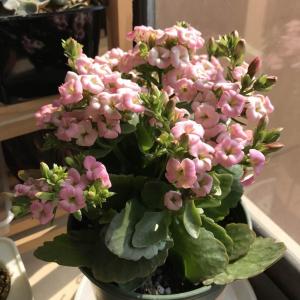
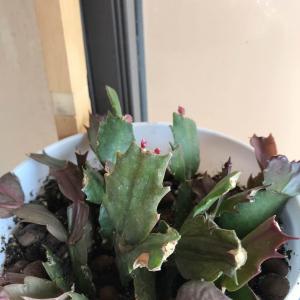
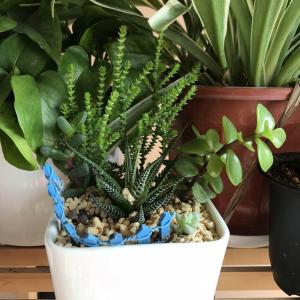
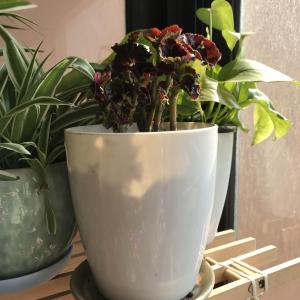
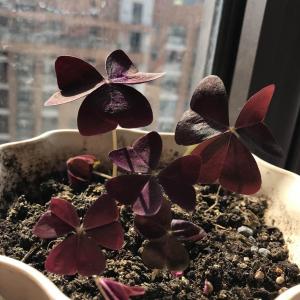
1.单瓣长寿继续开开开
2.蟹爪兰开始长新叶
3.小拼盘
4.冻的不行的海棠缓了过来
5.紫色四叶草开始苏醒





1
0
心扉的猫咪:@lrgarden 春天真美好 万物苏醒
lrgarden:春天来了😄






